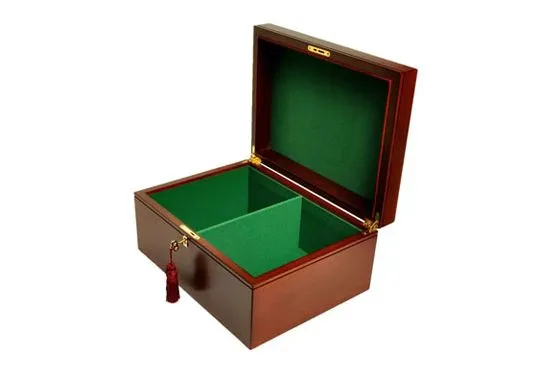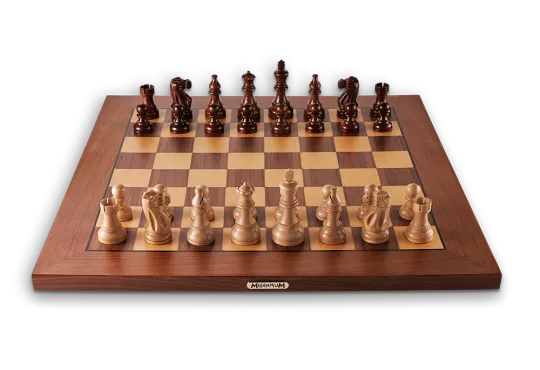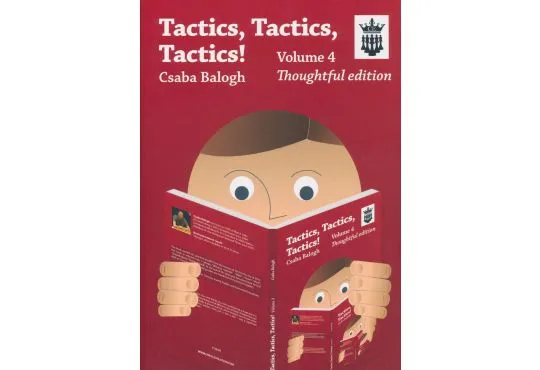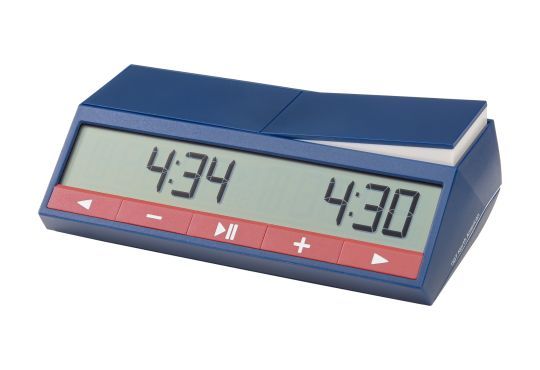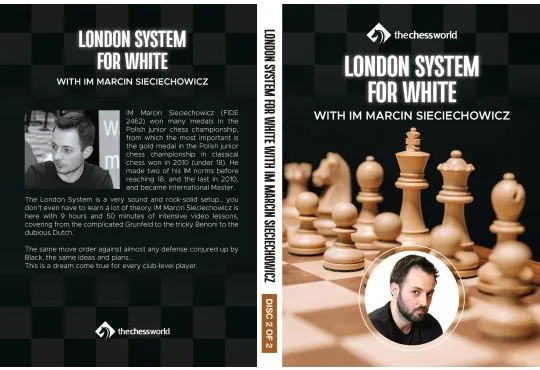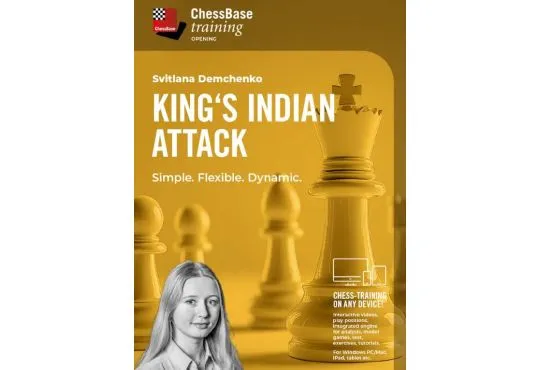Everything You Want To Know About Chess Castling
Castling is the most useful move in all of chess, and it does more than any other move that you can play. If you don’t know about castling in chess, then it may seem like your opponent is cheating, maybe they are showing you this blog post right now to prove to you that, “No, look, it's a real rule!” Not only is it a real rule, but it’s a rule you should try to take advantage of in every chess game that you play, and I’ll show you how.

Table of contents
What Even Is Castling?
In short, castling is a move that gets your king out of the middle of the board, and into safety. You do this by moving your black or white king over two squares, and your rook moves to the other side of the king. You can do this in either direction, as we will discuss later, but only if you follow the rules correctly. But first of all, why would we even want to move our king out of the middle?
Why Do We Castle in Chess?
The middle of the chess board is a dark and scary wasteland, enemies prowl the middle squares looking to attack your exposed king. Castling quickly gets that king to safety, putting the king in a well-defended position while also activating your rook into the game. Castling early is a great strategy for beginners. We must move our central pawns to develop our pieces, which often leaves the middle of the board vulnerable, making it unsafe for the king and allowing for checks and attacks. Because the move also activates the rook, it is a highly efficient move, something that saves time and helps your position. Here are rules that have to be followed.
The Rules of Chess Castling
Castling in chess comes with its own set of rules and requirements. It’s easiest to look at these in two ways: times you can castle, and times you can’t castle. We want to try and castle in every game and as quickly as we can, so be familiar with these rules.
When Can You Not Castle Your King
There are several reasons that you may not be allowed to castle in a chess game. If you are playing online and you try to castle without realizing you would be breaking one of these rules, the website won’t let you and you will go on to find another move. But, if you are playing a tournament game, if you touched your king to castle, and your opponent calls the touch move rule on you, you would still be required to make a king move if you are able, that is not castling. This could ruin your position! So be sure you know these rules.
-
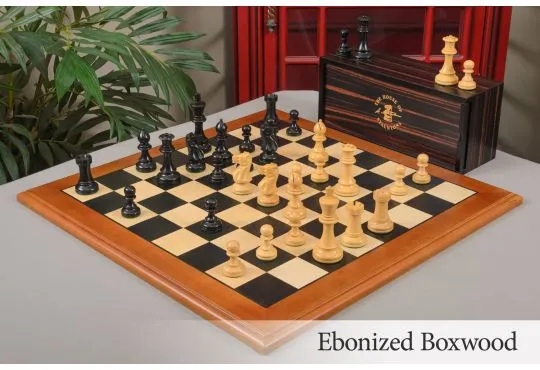 Free Worldwide Shipping
The Superior Grandmaster Chess Set, Box, & Board Combination Enjoy Savings of 24% Off MSRP When Purchased as a Combination
Free Worldwide Shipping
The Superior Grandmaster Chess Set, Box, & Board Combination Enjoy Savings of 24% Off MSRP When Purchased as a Combination$457.00
Starting at $349.00
To $428.95
Pieces Moved
You are not allowed to castle if you have already moved the king or rook. If you have moved your kingside rook, however, you would still be allowed to do queenside castling, and vice versa. However, if you have already made any king moves, even if you return to the starting square the king is on, you are no longer allowed to castle.
Check or Checkmates are Involved
Another time that you would not be allowed to castle is if a check is involved. Missing that you are in check is a common way to play an illegal move in tournament play, so make sure you realize if you are currently in check.
In Check
If your King is being attacked right now, you cannot use a castle to escape that attack. Don't ask me why. It’s just the rule. It seems like castling would be a fine way to escape the move, but you can’t. You would have to capture, protect, or run away. And if you have to run away, remember that you will not be able to castle because you have moved your king.
Moving in or through check.
You can’t castle if you are in check, but you also can’t castle if you would be moving through or into a check. Obviously, you can’t end your turn in check, but it’s important to remember that you can’t castle through a check either. Meaning if you're castling, which moves your king over two squares, would move your king through a square being attacked by an opponent’s piece, that move would be illegal.
When Can You Castle Your King
Those were lots of times you couldn’t castle your king, so when can you castle? As long as you are not breaking any of those other rules, then you only have one other thing to worry about. Have you developed your pieces?
Pieces Out of the Way.
You need to move your pieces out of the way before you castle. That may seem obvious, but I have seen some beginners try interesting things on the chess board before. It’s good to be creative in your play, but not that creative. Move your pieces out of the way of the king and the rook, then you can castle. So if you are castling on the queenside, you also have to move your queen out of the way, taking an extra move.
Why Did We Start Castling?
Castling itself evolved along with the game of Chess. The way the king moved and existed in the game changed over the centuries, as did the effectiveness of pieces like the bishop and the queen. The queen, for instance, used to be a very weak piece that could only move like the king does now, one space at a time. You can read about some of the history of castling in this article by John McCrary where he discusses some of that evolution. Ultimately, as pieces like the queen and the bishop became more dangerous, long-range pieces, the king needed a way to stay safe. The game evolved differently in different areas, but eventually, consensus was found with our modern rules. Though sometimes there is still debate over those rules.
Types of Castling and the Chess Strategy Involved
As mentioned before, you can castle both kingside and queenside. Castling short is notated as 0-0, and castling queenside is notated as 0-0-0. What is the difference? Does it matter where you castle? Let’s take a look.
Short Castling or Castling Kingside
Castling short, or 0-0, is what will happen in a large portion of your games. If you follow good opening principles and want to castle as quickly as possible, that will generally lead you to castling short after quickly developing your knight and bishop. Many openings have this plan. You are not immune to attack just because your king is castled! Make sure you also use your pieces to defend your king if you get attacked.
Long Castling
Castling long, 0-0-0, is not as common. If something happens on the kingside where the king would not be safe there, you might need to move your queen out of the way, and castle queenside. Some players, especially beginners, can start to feel like they really like castling queenside, I think this is because those games can be really exciting, and the rook immediately feels a little more useful than when you kingside castle. But when you castle long you need to be careful.
Opposite Side Castling in Chess Matches
If both sides execute what is called “opposite side castling,” where one side castles short and the other long, the game often becomes highly aggressive, and the pawn takes on an attacking role. Since the pawns can advance toward the enemy's king without weakening their own, these attacks are fast and ferocious. You can use this to your advantage, though. Also, if you do long castle, make sure you keep your a-pawn defended because your king will not be defending it right after castling. Sliding your king over one more square is a common move after having castled long.
Castling By Hand
What do you do if you have already moved your king and you can’t castle anymore? Well, your king does not have to be destined to live in the wilderness of the middle of the board, you can do what is called “castling by hand.”
-
 Free Worldwide Shipping
The Windsor Series Wood Chess Set, Box, & Board Combination Enjoy Savings of 24% Off MSRP When Purchased as a Combination
Free Worldwide Shipping
The Windsor Series Wood Chess Set, Box, & Board Combination Enjoy Savings of 24% Off MSRP When Purchased as a Combination$467.95
Starting at $356.00
To $445.95
The king has to take matters into their own hands and get themselves to safety; no fun rules to save them now. Castling by hand means you manually move your rook out of the way and then tuck your king to safety. This takes much more time than regular castling, but we do it because we have to, not because we want to.
Quirks of Castling and Fun Checkmates
Castling is a unique rule in chess, as I mentioned it is the only time that you can move two pieces at once. This also means that certain unique positions can arise from castling. Because of the rules of castling, you actually can castle even if your rook moves through danger, but not your king. This can sometimes lead to confusion among players, or even the involvement of tournament directors,. In this article chess historian Edward Winter describes a few interesting moments. In one instance, a player believed his opponent had moved illegally by castling, only to discover that they had checkmated him in one move.
Castling here leads to a nice checkmate! This is quite an achievement. I recommend castling earlier than that, but always remember this special move if it is still legal!
Frequently Asked Questions
Castling gets your king out of the middle of the board into safety. You move your king over two squares, and your rook moves to the other side of the king.
Castling is legal as long as neither the king nor the rook has moved before, there are no pieces between them, and the king is not in check, does not move through check, and does not land in check.
As long as the normal requirements for castling are met, you can also castle queenside. You have to move your queen out of the way as well, so it can take more time.
If you are playing online, there are several reasons why the computer may not let you castle. Usually, it is because the king or the rook has moved, there are pieces between them, or the king is in check, would move through check, or would land in check.
Make sure you pause your clock and let a tournament director know there is an issue at your board.



